


The hospitality industry is sometimes criticised for its negative contribution to the environment and sustainability. But the hospitality industry, when done right, has every opportunity to be a regenerative force for the place it serves. In a number of articles, Swedish Lapland Visitors Board wants to highlight some of the initiatives taken by the industry – in the pursuit of enhanced social, economic and environmental sustainability.
At Svantes Bistro och Café in Harads, there are no tables left for lunch. They are serving cabbage rolls today. There are villagers there – some in high-vis attire, some without. There are also people wearing Moon Boots and fur hats, undeniably arrivals from some other part of the world. Then there are us, just passing along route 97 on our way from Jokkmokk to Boden. This café was closed for many years until the group behind Svantes Vilt decided on a fresh start.
– There is no question that Treehotel and Arctic Bath played a part in that decision. The hotels have affected the Edefors area. But for the villagers, they’re not organic meeting places and that’s what we wanted to create: a meeting spot for us who live here, and at the same time for the whole world, says Andreas Renberg, CEO of Svantes Vilt and one of the initiators of the revived bistro.
The Edefors area was once a major part of the Swedish treasury’s economic hub. Salmon fishing in the Edefors rapids was the reason for Luleå’s urban relocation 400 years ago, and how Uppsala University and Uppsala Cathedral were built. However, as was the case for many other villages and communities in the inland region, it became increasingly difficult to convince people to stay. It was the same story when it came to visitors. One day, Britta and Kent Lindvall had a stroke of genius, and Treehotel was born. The story of how some tree houses in the forest near Harads became a world attraction, visited by popstars and actors of all kinds, is well known. The tree houses, designed by Scandinavia’s most famous architects, became a talking point. Then the spa hotel Arctic Bath was built. Suddenly Harads, in Boden municipality, was one of the coolest micro destinations in the world.
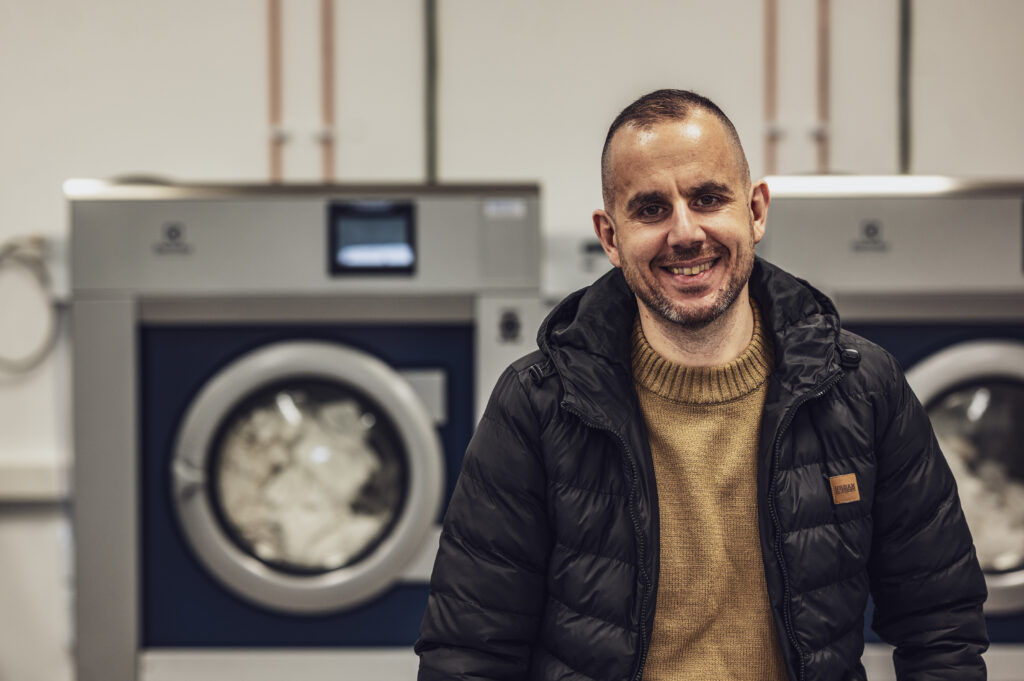
Anyway, back now to Svantes, the cabbage-roll buffet and people wearing safety shoes or Moon Boots. Juan Handal came here as a refugee from Palestine more than 20 years ago. He got a job at Svantes Vilt. Today he is a partner in the company, owns several properties in the village (including the house where the café is located) and runs a cleaning and laundry service. His laundry, the only privately owned one in northern Sweden, basically had two customers: Arctic Bath and Treehotel. Juan says:
– Well, it started when Peter [Engström] at Arctic Bath said they needed a local laundry. I bought a washer and a dryer. Then I also started doing laundry for private individuals, for the elderly who needed help. It was appreciated.
– When the new owners at Treehotel said they wanted us to take care of their laundry as well, we were able to expand.
– So yes, the fact that we have a local laundry in Harads is definitely due to Arctic Bath asking. But since then, we’ve expanded. These days more than 20 people work at our cleaning and laundry service, and when we got our latest contract we said that soon enough we’ll have to expand again.
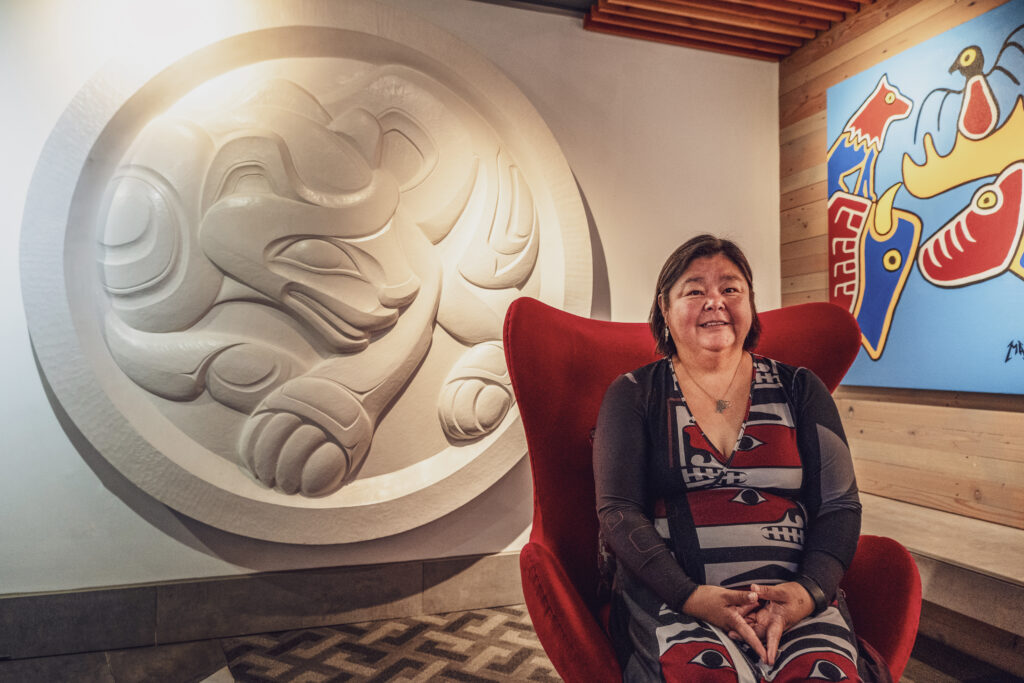
There is often talk about social sustainability. But what does that mean? One of the more talked-about examples internationally, and one that is usually mentioned is the hotel Skwachàys Lodge in Vancouver. When it opened in 2012, it quickly became known worldwide. The global press wrote about it; prizes were awarded. The whole purpose of Skwachàys is twofold: it serves partly to provide housing to artists for British Colombia’s indigenous community, and partly as a gallery, a sales space, for those creating – as a way of countering cultural appropriation. What happened was simply that an old hotel building in the middle of Vancouver was converted into a boutique hotel. Half the building – 20 rooms – became a hotel and the other half became apartments for various artists-in-residence.
Caroline Phelps is the hotel’s Program Coordinator for the Artists in Residence Program. She is an artist herself and cares deeply for the artists’ well-being. When I ask her what she feels about the hotel she runs, her answer comes naturally:
– I’m mostly proud of the artists, of the development they are given and that they reach for. There aren’t just artists here at Skwachàys, there are also people in the film industry, authors, and others.
– At the latest edition of Vancouver Fashion Week, several of our designers were represented. So now I’m mostly hoping for an international film festival for indigenous people, she says.
Another entrepreneur who has become famous for deep social involvement is Café Reconcile in New Orleans. The café is a non-profit where business is all about teaching youth, often homeless off the street, to work at a restaurant. Just because a company has social ambitions and is non-profit, it does not have to compromise when it comes to goals and determination. In September 2023 the New York Times published its list of 50 restaurants in the US you should visit for a meal, and Café Reconcile was on the list. Or, as Juan Handal says when we are finishing up our interview in Harads about ambitions and being able to give something back to the place:
– I learnt something really important from Svante. He always said: “You have to do your best with every cut of meat. Because it’s the only way to achieve good quality.”
– That has to be the ambition in everything you do.
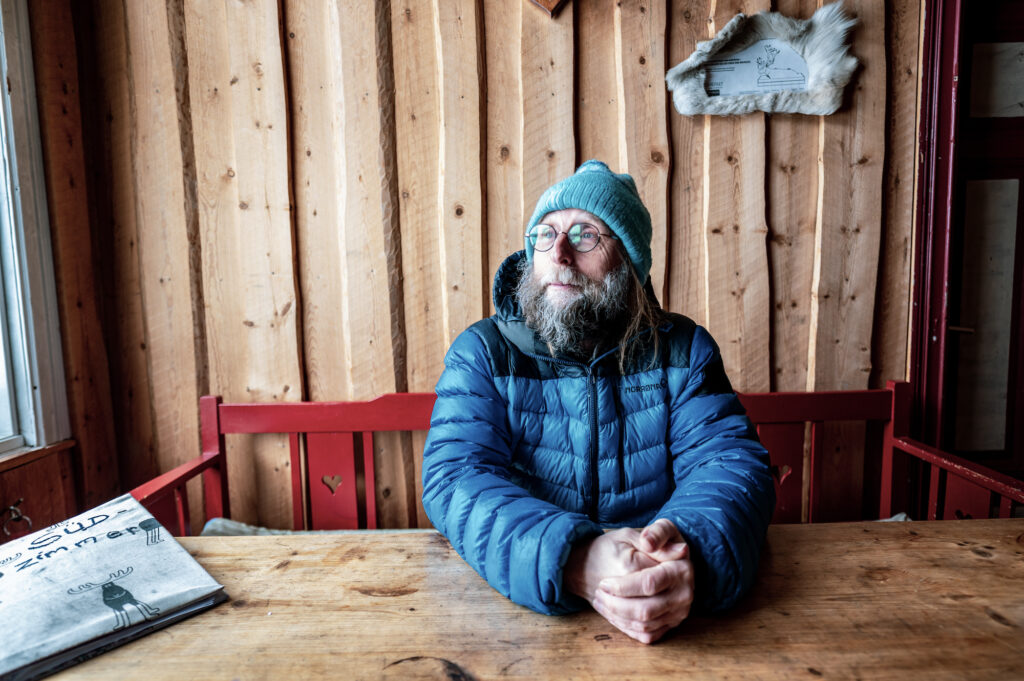
It takes 90 minutes of driving on small roads to get across the forest from Harads to Nattavaara. Here Silke and Dirk Hagenbuch run Wilderness Village Solberget. A place where people from Europe come to experience nature on a farm in the inland region. Put simply: what it is like to live a week of your life with no electricity or running water. Dirk was 24 when he first came to Sweden. Later, when he was studying at university, he would organise trips to Solberget for groups. Once he finished his studies, he moved to Nattavaara.
– I’ve had every possible job you can find around here: from miner to social worker. But when the old owners of Solberget phased it out, I bought it and started the business.
Dirks societal commitment started when the school in Nattavaara was going to close. He took a stand against that decision. (If your wife has given birth to two children in a Volvo 245 between Nattavaara and Gällivare you might want to keep a school and childcare in the village.) But the school was still closed, a setback. It was the beginning of many challenges to come.
After a new procurement process for train traffic to the country’s northernmost part in 2008, the new operating company decided not to stop in Nattavaara. Dirk’s guests, all arriving by train from German-speaking Europe, would now have to disembark many miles away. He thought it was completely mad, with good reason. That fight Dirk did win, because the Transport Authority traffic plan stated that Nattavaara station should be used. Then it was time for the next challenge: the local store shut down in 2012. After nine months, Dirk and the others in the economic association had made it possible for it to open again. By selling shares in it they collected 400,000 SEK, then Gällivare municipality added the same amount. 200 shares at 2,000 SEK a piece. Dirk had sent out the newsletter to his visitors list and they bought 70 shares before anyone in Nattavaara had bought one.
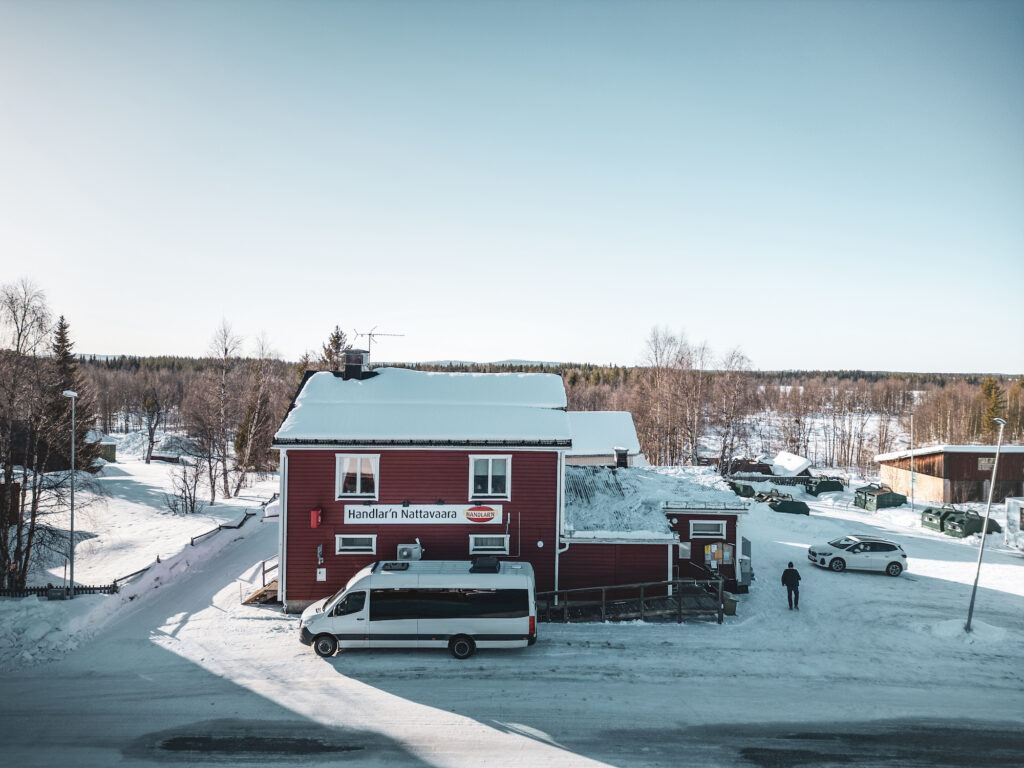
– I suppose it was partly for the fun of owning a share in a local store above the Arctic Circle, but also to take a stand for and show commitment to a place they liked. We have many returning guests.
Today there is a 24 h local store in Nattavaara. It has been doing great and the pandemic year was the best ever. The war in the Ukraine and the world economy has made it difficult of late, but self-scanning and generous opening hours have given the store a new life.
– Now we have it staffed for more hours than before. But we’ve managed to not have staff during the time when you need to pay extra for unsocial working hours. Nowadays people who commute still have time to shop here. It’s really good.
– In summer the shop does well because there are many cabin owners here. It’s the winter that’s hard. Then Solberget, our facility, makes up 15% of the turnover.
Another example of the commitment and importance of Solberg’s visitors is the summer café in Nattavaara. It was run by an open-air museum association, but the years were starting to take their toll. Something had to be done to find staff for the café. Dirk sent an email to his visitors list asking if someone was interested in help running the café.
– This year something special is happening. The woman who was our first volunteer over 15 years ago is coming back to run the café the entire summer with her family.
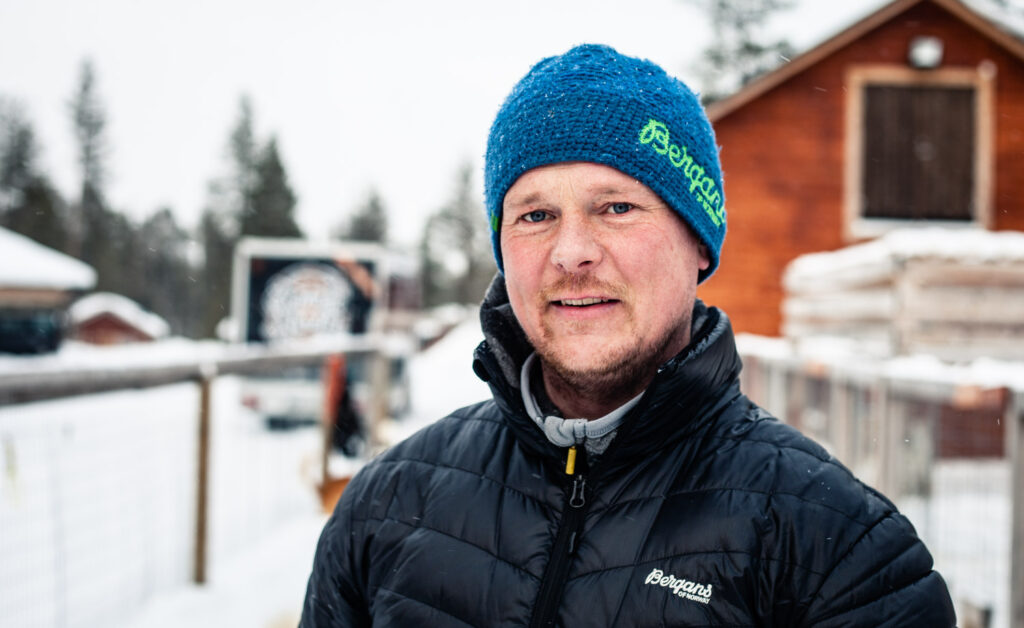
Speaking of local stores, by the way: the classic Holmas in Kangosfors has been around since 1798. (This is fifty years before Seattle or Vancouver became cities, to provide some perspective.) The previous owners had a hard time due to illness in the family. Sara and Johan Väisänen, who run Explore the North and the facility Pinetree Lodge in Kangosfors, saw what was happening. A local store is central to the social life of the area.
– One day I asked the owners if they needed help and it soon transpired that Sara and I would also be running a local store, says Johan Väisänen.
– It allowed us to contract staff in a different way. When they weren’t at the lodge, they could be in the store.
– But we soon realised that for a local store to work well, the owners have to be there in the shop. Sara and I couldn’t really do that.
– So instead, we managed to sell the local store to some who were able to go all in. We made some investments, and you could say we saved the store for the village.
– Now Kangosfors also has a local store that is open all hours. But if you want to meet people, best go there during daytime. When the village is full of life.
Care for the Arctic — it’s our home is a joint Arctic agenda with a toolbox for the Arctic destination’s main stakeholders, that address the challenges that we face together – locally, and globally, socially, economically, and environmentally. Read more about it here.